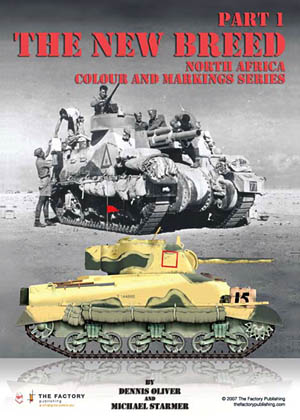Allied evaluation of the Japanese Type 95 light tank showing its strengths and weaknesses — ends with a drag race between the Type 95 and a Stuart light tank. (Source: U.S. Combat Bulletin No. 5.)
Allied evaluation of the Japanese Type 95 light tank showing its strengths and weaknesses — ends with a drag race between the Type 95 and a Stuart light tank. (Source: U.S. Combat Bulletin No. 5.)
The nine main causes for failures of U.S. Army GMC trucks were outlined on the back cover of Army Motors, Dec. 1944.
THE 1ST ARMY POINTS OUT 9 THINGS TO
WATCH ON THE RHINE
… or anywhere else 2½-ton, 6×6 GMC’s are taking a beating. Whenever overloads are authorized, wherever long hauls or tough terrain are everyday stuff, you’ll do well to double-check these items the nine “main causes of failures” reported by the 1st Army from the Western Front.
2. ADJUST CLUTCH-PEDAL FREE TRAVEL (TO 2½”)
3. KEEP FOOT OFF CLUTCH PEDAL EXCEPT TO START, SHIFT AND STOP
4. DON’T TOW WITH JUST A ROPE OR CHAIN. USE TOW BAR TO PREVENT FRONT-END DAMAGE TO TOWED VEHICLE
5. TIGHTEN RADIATOR HOLD-DOWN BOLTS
6. TIGHTEN TRANSFER CASE, TRANSMISSION & PILLOW-BLOCK MOUNTING BOLTS
7. TIGHTEN CAB HOLD-DOWN BOLTS
8. CLEAN & RE-OIL HYDROVAC AIR CLEANER
9. TIGHTEN BOLTS THAT HOLD BOGIE ASSEMBLY TO FRAME
ALL THIS—AND THE REST OF FORM 461, TOO!
Newsmap poster from April 1945 celebrating the 3rd Anniversary of the Women’s Army Corps (WAC):
World War II armor reference books from The Factory Publishing:

New Breed: Part 1, North Africa (Colour and Markings Series) by Dennis Oliver and Michael Starmer
Rare color video of captured German and Japanese aircraft and rockets.
The following report on the Schmeisser MP40 Submachine Gun was published in Foreign Military Weapons and Equipment, Vol. III, Infantry Weapons, Pamphlet No. 30-7-4, Department of the Army, 1954.
9-mm Submachine Gun MP40 (Schmeisser)
(MACHINENPISTOLE M40)This weapon is an improved version of the MP38 which was designed for use by parachute troops. Because of its simple construction and general reliability it was produced and issued in large quantities to all Army units. Of excellent design, these “machine pistols”, as the Germans called them, proved superior to all other types of German submachine guns and rapidly replaced all earlier weapons of this type.
November releases from Hasegawa include Japanese and German fighters.
M4 Sherman Tank modification and upgrades from Army Motors, Maintenance Branch, Office of Chief of Ordnance, Vol. 5, No. 1, April 1944:
If it’s a Tank, Medium, M4—here are the visible changes that should have been made by now. Check your score—and chase whatever’s missing.
Sorry our list couldn’t quite Tell All. For details on the above additions, subtractions, and modifications, you’ll have to consult the TB’s and FSMWO’s themselves. There are plenty of other TB’s you should have seen, too—full of fascinating facts on M4 operation, identification, lubrication, adjustments, cautions, and assorted SOP’s.
You’ll find all these cataloged in the latest edition of OFSB 1-1, under “pertinent publications” for the Tank, Medium, M4. Anything else is impertinent, including that remark you just made about having so much to read.
Left, top to bottom: New towing shackle-pins FSMWO-G1-W7; New style combat safety lights. FSMWO G1-W9; Disc type track idler wheel. TB 1700-31; Idler brackets. TB 17538-4; Fuel tank filler necks, FSMWO G104-W63; Crowbar bracket relocation, TB 700-48; Mono-gyro control, FSMWO C56-W1; Turret traversing control cam, FSMWO G104-W55; Turret armor plate, FSMWO G104-W57; Azimuth indicator, FSMWO G104-W74; Ammunition rack protector plate, FSMWO G104-W81; Improved turret master switch, FSMWO G104-W82; Gunner’s periscope sight, FSMWO G104-W91; Combination spot and signal fight, FSMWO G104-W92; Smoke bomb thrower, FSMWO G104-W93; Tank commander’s vane sight, FSMWO G104-W94; Impulse firing solenoid, FSMWO G104-W97; Hydraulic hand turret traverse, TB 1731F-1; Lift hooks on gun shield, TB 1758-2; Propeller shaft U-joint tube. TB ORD 12; Track support roller spacer, FSMWO G1-W2; Bogie lift modification, FSMWO G27-W1; Bogie spring bottom seat, TB 700-32; Cast track support roller, TB 700-46**; Bogie wheel bearings and seats, TB 700-72**; Steel track replacement, TB 700-106; Bogie wheel tire sidewalls, TB 1700-36; Bogie and idler wheels (outside U.S. only) TB ORD 22; Hub sprocket capscrew, TB 700-70**; Latest type blackout driving light, FSMWO G1-W6.
Right, top to bottom: Fuel relief valve, FSMWO G104-W65; New type cam assembly, TB 700-52**; Magneto timing change, TB 700-53**; Oil filter replacement elemerts, TB 700-76; Fire detector system, TB 700-98; Interchanging master clutch, TB 731A-6*; Engine oil tank level gage, TB 731 A-7*; Fuel line and accelerator ccntrol rod, TB 731A-11*; Carburetor dust guard, TB 1700-18; Excessive clutch release pressure, TB 1700-35; Bendix-Stromberg carburetor, TB 1725-16; Carburetor economizer seats, TB 1730-1; Valve and magneto timing, TB 1750D-2; Valve and magneto timing, TB 1750D-3; Carburetcr air horn drain plug screens, TB 1751-1; Piston ring change, TB 1751-11; Sealing of engine shroud, TB 1751-12; Valve rocker arm clamp screw, TB 1751-13; Front main Dearing support, T3 1751-17; Autolite generator regulators, TB 731A-10*; Decontaminating apparatus, TB 700-58; Steering lever parking brake, FSMWO G1-W5; Driver’s and ass’t driver’s door lock, FSMWO G104-W75; Hatch guards, FSMWO G104-W83; Clutch pedal interference, TB 700-49; Instrument panel voltmeter, TB 700-68**; Transmission synchronizer assembly, TB 1700-19; Transmission pinion gear shim, TB 1700-22; Transmission clutch gears, TB 1700-23; Differential compensating pinion, TB 1750-4; Transmission oil pump, TB 1750-5.
*Superseded by TM 9-731A (23 Dec. 43)
**Included in TM 9-731A (23 Dec. 43)
A U.S. soldier examines a captured German Mistel aircraft created from a Fw 190 fighter mounted atop a Ju 88 bomber in May 1945. (U.S. Air Force Photo)
Captain Jack Shaw and the crew of B-24 “Tidewater Tillie” are congratulated after sinking a German submarine by Brig. General Larson, commanding General of the Antisubmarine Command in England. (U.S. Air Force Photo)